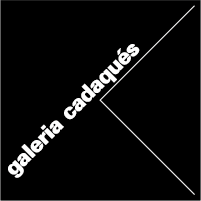
“Eros is an archaic, pre-human, totally bestial plate, which addresses the continent that emerges from acquired human language and voluntary psychic life, taking the two forms of anguish and laughter. Anguish and laughter are the dense ashes slowly falling from that volcano. ”
Pascal Quignard
Although Roger Cortés (R.C. from now on) uses a Manichean Eros and Thanatos to title his exhibition, it is clear that the interest of the invention lies not so much in the abstract poles of this segment as in its interstices. In this sense, Eros (or Love) would have its impure or bastard (human) version in sex or sexuality (understood as an eminently bodily experience), while Thanatos (or Death) would take the form of a kind of existential fear or dread that usually accompanies most self-conscious creatures. That is to say: Eros and Thanatos would “only” be the definitive brackets between which the drama or comedy of human existence is staged.
We move from the Love-Death binomial, therefore, to the ambiguous landscape described by Sex and Fear. We still owe the most classical definition to Virgil: “[el amor es] a dry, deep wound that burns like a dry or secret fire (gravi iamdudum saucia cura volnus caeco igni)”)”; or to Catullus, who considers the sentimental state as a fatal disease: “O Gods, if you are pious, if you grant men something more than fear at the hour of death, cast your gaze on me (me miserum adspicite), on my misery. My life has been pure. Reward me. Free me from this pestilence (pestem): love, this poison (torpor) that freezes my bones, that distils in my blood, that drives away the joy (laetitia) of the heart”…. A terrible beauty described by classical authors that is at the genesis of our culture and that has continued uninterruptedly throughout the history of art thanks, to a large extent, to the fact that it has a privileged container, which is none other than the human body.
This is where R.C.’s proposal bursts in with force: his concern with the representation of the body leads to a syntax made up of fragments that we intuit as the only “reasonable” way to understand something in relation to the bipolar conflict mentioned above. The elements with which R.C. wrestles are Love-Death, Sex-Fear and, of course, the perennial Cartesian battle between container and content, between thought and the body that supports it. Klossowski gave us the formula based on a systematic re-reading of Nietzsche: “The body as a body is no longer synonymous with itself: an instrument of consciousness, it becomes the homonym of the person”; a denied body that is claimed by vitalist thought and that art has almost always preferred to show in its nakedness. Or denying itself in its nakedness: another unfolding, that of the clothed body that can only be fully recognised in the literal profiles of the flesh, in its sinuous and sometimes abrupt orography. We are talking about a split but, above all, about a relationship that can be staged in many ways and that R.C. solves (or problematises even more) thanks to the lack of external referents, thanks to the great black space that engulfs like tar the ex-votos that he deposits.
The exhibition Eros & Thanatos, despite containing moments that are certainly ironic, transports us to a space of transcendence that is increasingly rare in the midst of contemporary artistic practices, which are too preoccupied with questions of elementary sociology or directly immersed in technological astravagance. R.C. speaks of the human being and his prison of drives; R.C. actively dialogues with the history of art (one can play at discovering the paintings hidden behind his works…) and, at the same time, subverts the genres (painting and sculpture) through a hybridisation of languages which is one of his essential characteristics. At the end, a large shadow is hovering over us. The problem announced by the oracle that is always Jean Baudrillard: “The universe is not dialectical, it is condemned to extremes, not to equilibrium. Condemned to radical antagonism, not to reconciliation or synthesis. This is also the principle of Evil, and it expresses itself in the evil genius of the object, it expresses itself in the ecstatic form of the pure object”. Body turned into object and vice versa: the indeterminate space is the only container capable of bearing them.
Eudald Camps







